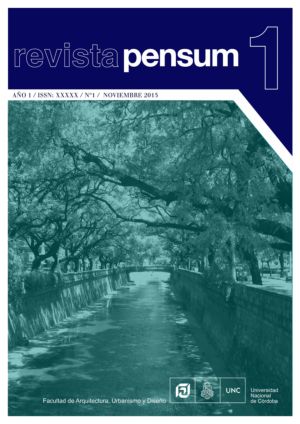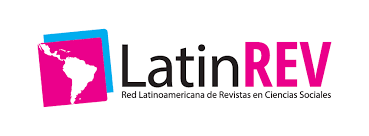RECOVERY STRATEGY OF SARMIENTO PARK, CORDOBA CITY
DOI:
https://doi.org/10.59047/2469.0724.v1.n1.12947Keywords:
Sarmiento Park, Strategy, Recovery, Natural and cultural heritage.Abstract
The recovery of Sarmiento Park is only possible from the development of a comprehensive project that, contemplating the current values of its cultural and natural heritage set the guidelines for the design of a public policy aimed to redefine its role and image inside the system of public open spaces in the city of Córdoba. The independent and correlated study of the components of the Sarmiento Park made it possible to conclude that the topographic break that constitutes the barranca determines two major units with characteristics of homogeneity well differentiated: unit terrace high and unit terrace low. The use of the structure of analysis SWOT allowed evaluating internal and external situations of each unit, to determine strengths, weaknesses, opportunities and threats. The model projectual for Sarmiento Park was established in three basic lines that define the overall strategy: the heritage, the new uses and the planning. As conclusions it is recommended the formulation of a specific legal framework that ensures its protection and the securing of minimum budgets destined to put in place an intervention project aimed at its recovery, for which, this work is a technically solid, realistic and flexible tool.Downloads
References
BALLART HERNÁNDEZ, Josep, TRESSERRAS, Jordi Juan I, Gestión del patrimonio cultural. Ariel, Barcelona,
[2001]
BERJMAN, Sonia. “Nuestros paseos públicos a través del tiempo”, en BERJMAN, S. (Comp.) El tiempo de los
parques. Instituto de arte americano e investigaciones estéticas “Mario J. Buschiazzo”. FAUD, UBA, 1992.
CRESPÍ RODRIGUEZ, José. “Revalorización del Parque histórico de El Pasatiempo. Investigación, gestión e
intervención”, en Anuario Brigantino nº 29, 2006.
FARIELLO, Francesco. La arquitectura de los jardines. De la Antigüedad al siglo XX. Ed. Mairea/Celeste, Madrid,
[1967].
FERNÁNDEZ, Roberto. Obra del tiempo. Introducción a la teoría y la práctica de la gestión integral del patrimonio
urbano-arquitectónico. FAUD, UBA, Buenos Aires. 2007.
GARCÍA LORCA, Andrés M. El parque urbano como espacio multifuncional: origen, evolución y principales
funciones, en http://www.dialnet.unirioja.es
PAGE, Carlos A. El Parque Sarmiento. Colección Historia de la Arquitectura de Córdoba. Fundación Centro. 1996.
SBARATO, Darío et al. Estudio de Impacto ambiental. Rehabilitación y puesta en valor del parque Sarmiento de la
Ciudad de Córdoba, en http://www.bvsde.paho.org/bvsacd/unc/paper15.pdf.
Fuentes:
Comisión Nacional de Museos, y de Monumentos y Lugares Históricos, CNMMyLH. En línea [http://www.
monumentosysitios.gov.ar/]
Documentos doctrinarios:
Carta de Florencia. Comité Internacional de Jardines Históricos, ICOMOS-IFLA, 1981.
Convención para la Protección del Patrimonio Mundial. Comité del patrimonio mundial, UNESCO, 1992.
Directrices Prácticas para la aplicación de la Convención del Patrimonio Mundial. Centro del Patrimonio Mundial,
UNESCO, 1999.
Otros documentos e informes consultados:
Constitución de la Nación Argentina. 1994.
Constitución de la Provincia de Córdoba. 1987.
Carta Orgánica de la Ciudad de Córdoba. Ciudad de Córdoba. 1995.
Downloads
Published
How to Cite
Issue
Section
License
Authors who publish in this journal agree to the following terms:
a. Authors retain copyright and guarantee to the journal the right to be the first publication of the work as well as licensed under a Creative Commons Attribution-ShareAlike 4 license.
b. Authors may separately establish additional agreements for non-exclusive distribution of the version of the work published in the journal (e.g., placing it in an institutional repository or publishing it in a book), with an acknowledgement of its initial publication in this journal.
c. Authors are permitted and encouraged to disseminate their work electronically (e.g., in institutional repositories or on their own website) before and during the submission process, as this may result in productive exchanges, as well as earlier and greater citation of published work (See The Effect of Open Access).
d. 4.0 International Creative Commons Attribution-ShareAlike 4.0 License.












